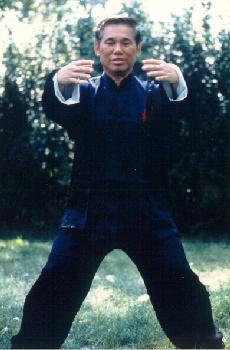10 PRINCIPLES OF TAIJIQUAN

10 Principles of Taijiquan
Question
Can you please elaborate on the 10 principles of Taijiquan?
-- Relindar, Netherlands
Answer
The 10 principles of Taijiquan, which have greatly enriched our kungfu and chi kung as well as our daily life, are as follows:
- Empty your mind of all thoughts.
- Do not tense any muscles.
- Loosen your waist.
- Principle of false-real.
- Principle of sinking and pressing.
- Using intention and not using strength.
- Co-ordination of top and bottom.
- Integration of internal and external.
- One gentle, graceful flow without any break.
- Movement in stillness, stillness in movement.
These principles are given in simple English. It should be noted that when Zhang San Feng wrote these 10 principles, he did so in classical Chinese.
The first principle was given as "xu ling ding jing". Word by word the expression is "empty-spiritual-press-force", which does not mean anything to most people. It is figuratively translated as "Empty your mind of all thoughts".
In Taijiquan it is important not to tense any muscles. Once muscles are tensed, they block energy flow, or chi flow, which is the ingredient for internal force.
The third principle, "Loosen your waist", is important in Taijiquan. The waist is the controller of all Taijiquan movements. If the waist is stiff, his movements will be affected. Internal force, which is essential in Taijiquan, comes from the rotation of the waist.
The principle of false-real is often used in Kungfu, and Taijiquan is Kungfu. We may feint an attack on top, but actually kick the groin of an opponent. If the opponent fails or hesitates to defend against the top attack, then it becomes real.
The principle of sinking is expressed in body-movement. A Taijiquan exponent may not move his legs, but he uses body-movement of sinking to neutralize the force of an opponent. The principle of pressing is to continuously attack an opponent, like using a combat sequence. The principle of sinking and pressing can be employed together. If the opponent counter-strike as we continuously attack him, we can sink our body to avoid his counter-attack.
"Using intention and not using strength" is very important in Taijiquan. Taijiquan is an effective martial art that does not use muscular strength. Then, how does one engage in combat? It uses internal force.
The top and the bottom of an exponent's body must be co-ordinated. The principle means that there must be connection between the upper body and the lower body, between the body and the legs. If the hands are engaged in combat, the legs must be co-ordinated.
There must be integration between the internal and the external. Many Taiji practitioners today do not follow this principle. They do not, for example, generate internal force. In other words, what they do externally do not help them to develop internal force.
Taijiquan is sometimes described as once a practitioner has started his Taijiquan, there is no ending until he completes his Taijiquan set or sequence. The continuous flow is not only between patterns but also within a pattern.
"Movement in stillness, stillness in movement" refers to the mind being very calm but the actions can be vigorous. It may also refer to the mind or to actions only. The mind can be still, but when it is used it can be very fast. Actions can be still, but when they are used they can be very fast. Alternatively, the mind or actions can be very fast, but the mind or actions are calm and relaxed.
LINKS
